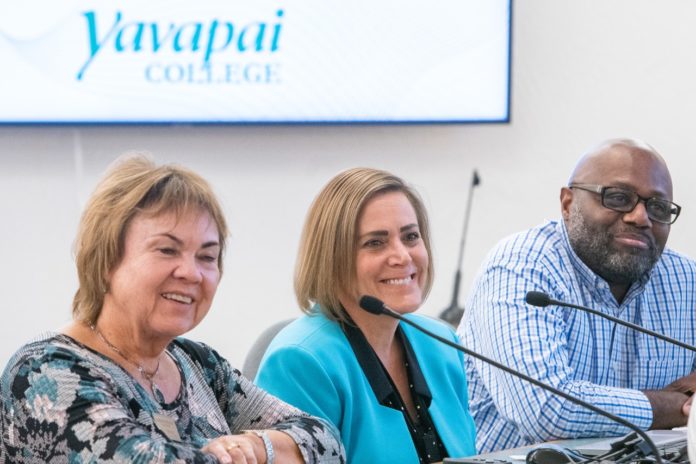
Each year the Sedona City Council receives at least one update on the goings on at Yavapai College, including any new programs on the Verde Valley side of the county.
Over the years, the news has varied from very optimistic to not so much. But the message shared with council on Sept. 28 definitely leaned toward the former.
Yavapai College President Lisa Rhine, Board Chairwoman Deb McCasland and Rodney Jenkins, vice president for community relations and student affairs presented the update at the meeting.
Rhine began her presentation with some of the college’s current highlights on Verde Valley campuses. Some of those included:
■ Opened Verde Valley Skilled Trades Center in Clarkdale with 100% of the classes at capacity. The college has the capacity to increase in size and the number of classes and skills offered based on need.
■ Several new academic programs including brewing, electrical, HVAC, plumbing, bakery and pastry cooking.
■ Several tuition incentives for enrollment offered for fall 2021, including First Class Free and First Semester On Us at Verde Valley Skilled Trades Center.
■ Plan for significant expansion of the Regional Economic Development Center. It is located in Prescott Valley, but the college has a satellite office in the Verde Valley.
■ Expansion of the Open Educational Resources program. This allows instructors to obtain materials for free, resulting in students not needing to purchase text books. This saved their students an estimated $300,000 combined in the spring and fall semesters.
■ Passage of Senate Bill 1453, which allows community colleges in Arizona to begin to offer four-year degrees.
■ No tax increase and no tuition increase.
■ Launch of the college’s comprehensive Strategic Plan and Subsequent Plans, which include an academic master plan, student affairs retention plan, marketing and recruitment plan, fundraising and development plan.
Rhine said that 100% enrollment at the Skilled Trades Center was boosted by their offer of a first semester free for those enrolled in the trade center.
“It helped us reach our capacity goal, but it also helped us reach individuals who otherwise may not have been able to attend,” she said, noting that those tuition funds were covered by federal Coronavirus Aid, Relief & Economic Security Act funding the college received.
In terms of being able to offer four-year degrees, Rhine said college leaders are “super excited about this opportunity.”
“Our board gave us permission to begin to explore this possibility,” she said. “We’re in the exploration phase. We’re reaching out to community members, so watch for that. I’m not sure how that will take place — maybe a survey, focus groups or a town hall.”
She added that while the college is excited and have been given the green light to proceed, there are still several steps that need to be taken before a four-year degree is offered, which she said could take two years to complete.
“We are one of the few colleges who have come out of COVID and have increased our student head count,” McCasland said. “We are healthy and doing a lot of good within our community “
While enrollment across Yavapai College has held steady, the culinary and hospitality courses at the Sedona campus have been struggling. In fact, hospitality courses are now on hold due to a lack of students.
“Right now, the program has taken a bit of a dip,” Jenkins said. “We’re trying to understand why. Is it because of COVID? Is it some weird anomaly that we haven’t figured out yet? We are really looking closely to figure out if there is something we need to do to tweak the program to get the numbers back up.”
For those in the program, Jenkins said students can choose to get a one-year certificate before going on into the workforce or a two-year associate’s degree.
“Most of our [culinary] students come from either being hired by a restaurant or going to be hired by a restaurant,” he said. “Almost all of our students in that program have employment waiting on them in the end.”
“The problem with that is housing,” Jenkins said. “We have to somehow address the housing issue if we want to expand the destination piece of it. On top of that, there is a tremendous amount of competition across the country. So, what’s the draw to bring someone from, say Ohio, to Sedona to take the course when there are like 1,500 to 1,600 programs in between the two? We have to be very realistic. We are looking under every rock to figure out how to breathe more life into the program.”
As for the hospitality program, Jenkins said the industry as a whole does not require any college accreditation to be hired.



















